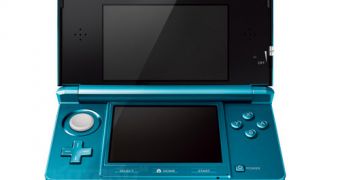Nintendo of America president Reggie Fils-Aime has explained the reasoning behind the use of the infamous Friend Code system with the company's upcoming 3DS handheld device, and how it has been enhanced for a simpler experience.
The Nintendo 3DS is one of the most eagerly anticipated portable consoles of the year, alongside Sony's Next Generation Portable, and promises to take mobile gaming, as seen on the regular DS, to a new level, with the addition of glasses-free 3D technology.
Friends Codes are something every Nintendo Wii user is against, due to their cumbersome nature that more or less punishes gamers if they want to play with others online, as they need to introduce long numbers in order to allow their friends to join in on the fun
For the 3DS, however, things are getting better, as Nintendo will only require you to introduce a friend code just once, and then you'll be able to share online experience with another person seamlessly, sort of like the friends lists seen on the PlayStation 3 or Xbox 360.
Nintendo's Reggie Fils-Aime explains why the Japanese company still implemented the system, despite being clunky for Wii owners.
"The thing that we've learned is that there are some games that you want to battle head to head, but you don't want to necessarily want that other player to have full access to the space," he said.
"Probably the best example is something like Animal Crossing. We may want to trade items in Animal Crossing, but do I really want the potential for you to come into my town and maybe disrupt it in some way? That's what Friend Codes are all about.
"There are certain games where Friend Codes are important. There are other games where, because of the head to head nature of the gameplay, it really isn't necessary."
If you just want to find out about the performance of other people without necessarily exchanging information, the Nintendo 3DS will have a StreetPass mode, in which the device downloads highscores and other such things from nearby 3DS units.
The device is set to arrive on February 27, in Japan, March 25, in Europe, and March 27, in North America.

 14 DAY TRIAL //
14 DAY TRIAL //